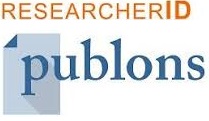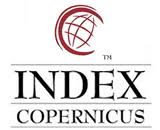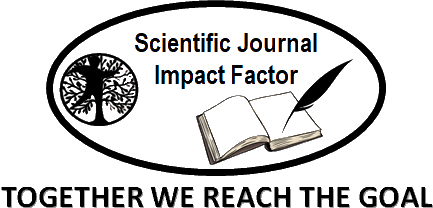Improving Spatial Thinking Skills through Contextual Teaching and Learning (CTL) Integrated with an Ecological Approach
Abstract
Keywords
Full Text:
PDFReferences
F. N. Hidayat, Herwin, S. P. Kawuryan, D. Gularso, and A. Qodat, “Relationship Analysis and the Enhancement of Student Social Intelligence in Problem-Based Social Science Learning,” J. Iqra Kaji. Ilmu Pendidik., vol. 8, no. 2, pp. 380–397, Dec. 2023, doi: 10.25217/ji.v8i2.3489.
F. P. Arviani, D. Wahyudin, and L. Dewi, “The Effectiveness of Problem Based Learning Model in Improving Students’ Higher Order Thinking Skills,” JPI J. Pendidik. Indones., vol. 12, no. 4, pp. 627–635, Dec. 2023, doi: 10.23887/jpiundiksha.v12i4.65606.
N. F. Aristin, K. P. Hastuti, D. Arisanty, S. Adyatma, and C. Donna, “Effectiveness of problem-based learning models to improve learning outcomes of geography in the new normal learning era,” J. Educ. Learn. EduLearn, vol. 17, no. 4, pp. 623–632, Nov. 2023, doi: 10.11591/edulearn.v17i4.20834.
I. Z. Ichsan, D. V. Sigit, and M. Miarsyah, “Environmental Learning based on Higher Order Thinking Skills: A Needs Assessment,” Int. J. Educ. Vocat. Stud., vol. 1, no. 1, pp. 21–24, May 2019, doi: 10.29103/ijevs.v1i1.1389.
D. Li, X. Fan, and L. Meng, “Development and validation of a higher-order thinking skills (HOTS) scale for major students in the interior design discipline for blended learning,” Sci. Rep., vol. 14, p. 20287, Aug. 2024, doi: 10.1038/s41598-024-70908-3.
C. I. Maican et al., “The role of contextual and individual factors in successful e-learning experiences during and after the pandemic – a two-year study,” J. Comput. Educ., vol. 12, no. 2, pp. 589–624, June 2025, doi: 10.1007/s40692-024-00323-0.
E. du Plooy, D. Casteleijn, and D. Franzsen, “Personalized adaptive learning in higher education: A scoping review of key characteristics and impact on academic performance and engagement,” Heliyon, vol. 10, no. 21, p. e39630, Nov. 2024, doi: 10.1016/j.heliyon.2024.e39630.
S. O. Kosassy, N. Gistituati, and M. Montesori, “The Effect of Contextual Learning Approach (CTL) to Improve Students’ Critical Thinking Ability in Organization and Management Subject,” presented at the 1st International Conference on Innovation in Education (ICoIE 2018), Atlantis Press, Jan. 2019, pp. 141–145. doi: 10.2991/icoie-18.2019.33.
J. Amirudin, U. Ruswandi, M. Erihadiana, and E. Rohimah, “Implementation of The CTL Learning Model Through Islamic Moderate Values in Improving the Attitude of Students Tolerance in School,” Nazhruna J. Pendidik. Islam, vol. 5, no. 2, pp. 690–703, June 2022, doi: 10.31538/nzh.v5i2.2201.
G. E. Niles, “Breaking barriers with translation: contextualization in curriculum design for global education,” Qual. Educ. All, vol. 2, no. 1, pp. 357–370, Apr. 2025, doi: 10.1108/QEA-05-2024-0046.
H. V. Le and L. Q. Nguyen, “Promoting L2 learners’ critical thinking skills: the role of social constructivism in reading class,” Front. Educ., vol. 9, June 2024, doi: 10.3389/feduc.2024.1241973.
S.-K. Tsai, T.-Y. Chuang, and Z.-J. Lin, “Enhancing Environmental Literacy Through Digital Game-Based Learning: A Technology-Integrated Attitude Change Approach,” Sustainability, vol. 17, no. 16, p. 7416, Jan. 2025, doi: 10.3390/su17167416.
N. M. Ardoin, A. W. Bowers, and E. Gaillard, “Environmental education outcomes for conservation: A systematic review,” Biol. Conserv., vol. 241, p. 108224, Jan. 2020, doi: 10.1016/j.biocon.2019.108224.
L. McCrone and M. Kingsbury, “An ecological approach to understanding transitions and tensions in complex learning contexts,” NPJ Sci. Learn., vol. 9, p. 54, Sept. 2024, doi: 10.1038/s41539-024-00267-1.
C. Li, S. Abrar-ul-Hassan, and F. Gao, “An Ecological Perspective on University Students’ Sustainable Language Learning during the Transition from High School to University in China,” Sustainability, vol. 12, no. 18, p. 7359, Jan. 2020, doi: 10.3390/su12187359.
H. S. Alazmi, “Effects of web-based GIS-supported inquiry on eighth-grade students’ academic achievement and spatial thinking in social studies pollution lessons: a mixed method study,” Int. Res. Geogr. Environ. Educ., vol. 0, no. 0, pp. 1–23, doi: 10.1080/10382046.2025.2556852.
K. B. Danlami, Y. F. Zakariya, B. Balarabe, S. B. Alotaibi, and T. M. Alrosaa, “Improving students’ performance in geometry: an empirical evidence of the effectiveness of brainstorming learning strategy,” Front. Psychol., vol. 16, July 2025, doi: 10.3389/fpsyg.2025.1577912.
H. Haq and Wakidi, “Evaluation of the Implementation of the Merdeka Belajar Curriculum in Secondary Schools in the Digital Era,” Int. J. Post Axial Futur. Teach. Learn., pp. 215–228, Aug. 2024, doi: 10.59944/postaxial.v2i4.391.
J. Z. Memmase, Sumarmi, and Purwanto, “The Earthcomm Learning Model on Spatial Thinking Ability: Efforts to Strengthen the Character of Environmental Care,” J. Educ. Res. Eval., vol. 9, no. 1, pp. 175–186, Feb. 2025, doi: 10.23887/jere.v9i1.85624.
J. W. Creswell, Research Design: Qualitative, Quantitative, and Mixed Methods Approaches. SAGE, 2014.
Sugiyono, Metode Penelitian Pendidikan: (Pendekatan Kuantitatif, Kualitatif dan R & D). Alfabeta, 2018.
S. Arikunto, Prosedur Penelitian Suatu Pendekatan Praktek. Rineka Cipta, 2018. Accessed: Sept. 14, 2025. [Online]. Available: https://cir.nii.ac.jp/crid/1970304959961419959
DOI: http://dx.doi.org/10.52155/ijpsat.v53.2.7527
Refbacks
- There are currently no refbacks.
Copyright (c) 2025 Afianasari Koryati Afianasari, Muhammad Mona Adha, Sugeng Widodo, Rahma Kurnia Sri Utami

This work is licensed under a Creative Commons Attribution 4.0 International License.



















